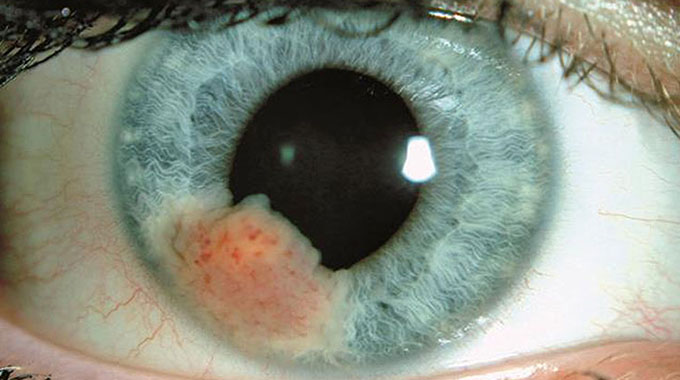Eye cancer cases on the rise

Rumbidzayi Zinyuke Senior Health Reporter
As Zimbabwe continues to register an increase in cases of childhood cancers, delays in seeking medical care has been blamed for the high number of children who lose their eyesight due to eye cancer.
According to the Zimbabwe National Cancer Registry 2018 annual report published recently, a total of 293 paediatric cancers (age 0-14 years) were registered in 2018.
Retinoblastoma (eye cancer) accounted for 15 percent of the total childhood cancers reported, behind leukaemia (18 percent) and renal tumours (17 percent). Other cancers affecting children included lymphoma (13 percent), soft tissue (11 percent), central nervous system (8 percent), bone tumours (6 percent) and neuroblastoma (3 percent).
Retinoblastoma is a rare eye cancer found in children and originates in the part of the eye called the retina. Although most cases (about 60 percent) involve only one eye, in some cases both eyes may be affected.
Chief Government ophthalmologist and head of the Sekuru Kaguvi eye hospital Dr Boniface Macheka said if identified early, eye cancer in children could be treated.
“Sight is the most important sense we have as human beings and if we are not attending to it, one can get blind from something that can be prevented. Retinoblastoma is a rare cancer which affects one in 17 000 to 20 000 live births, but when it does occur, it can be very devastating. However, it can be dealt with if identified early,” he said.
About 40 percent of retinoblastoma patients have the hereditary form of the disease, which is caused by alterations, also known as mutations, to specific areas within an individual’s genetic information.
Dr Macheka said in cases of hereditary disease, retinoblastoma could manifest itself at birth hence the need for parents and caregivers to constantly check their children’s eyes, particularly those with a family history of eye cancers. He said the Government had begun rolling out awareness campaigns, including messages on the next road-to-health care with the aim to educate parents, caregivers and primary health care workers on how to identify such conditions early.
“We are trying to put awareness messages and pictures on the next road-to-health card. This way we can increase awareness even from the clinics where nurses who administer routine vaccinations to children can help to identify eye cancer early. Even when the mothers see the pictures on the card, they can quickly seek assistance,” he added. According to studies, most children (95 percent) with eye cancer who begin treatment before the retinoblastoma has spread beyond the eye, can be cured and their vision saved.
“A child with this condition can be identified by looking at the eyes or even when you try to take a picture of that child you can tell that the eye is not normal. Once it is established, there are various treatment methods available. We only have to catch it early,” he said.











Comments